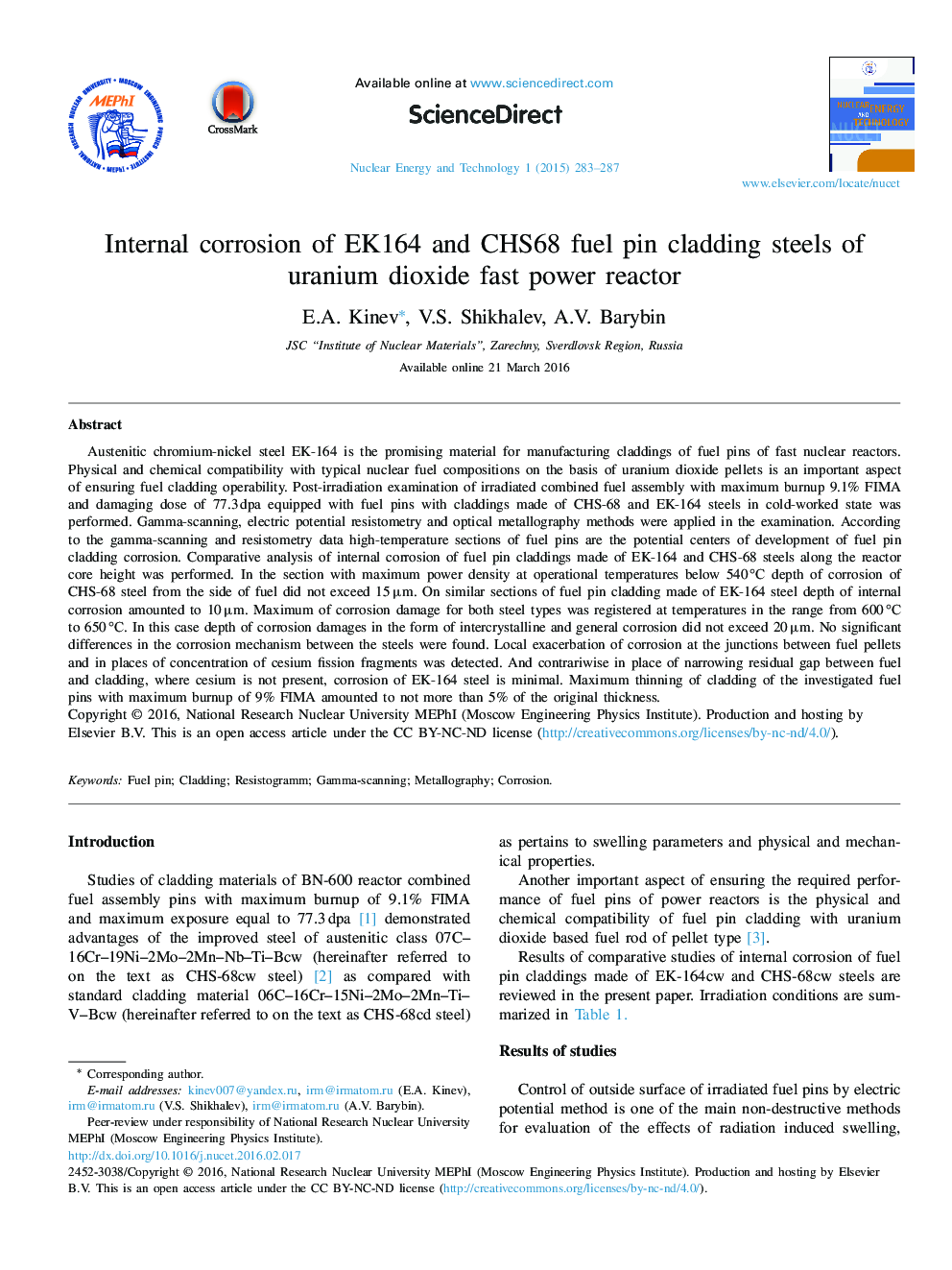| کد مقاله | کد نشریه | سال انتشار | مقاله انگلیسی | نسخه تمام متن |
|---|---|---|---|---|
| 366587 | 621452 | 2015 | 5 صفحه PDF | دانلود رایگان |
Austenitic chromium-nickel steel EK-164 is the promising material for manufacturing claddings of fuel pins of fast nuclear reactors. Physical and chemical compatibility with typical nuclear fuel compositions on the basis of uranium dioxide pellets is an important aspect of ensuring fuel cladding operability. Post-irradiation examination of irradiated combined fuel assembly with maximum burnup 9.1% FIMA and damaging dose of 77.3 dpa equipped with fuel pins with claddings made of CHS-68 and EK-164 steels in cold-worked state was performed. Gamma-scanning, electric potential resistometry and optical metallography methods were applied in the examination. According to the gamma-scanning and resistometry data high-temperature sections of fuel pins are the potential centers of development of fuel pin cladding corrosion. Comparative analysis of internal corrosion of fuel pin claddings made of EK-164 and CHS-68 steels along the reactor core height was performed. In the section with maximum power density at operational temperatures below 540 °С depth of corrosion of CHS-68 steel from the side of fuel did not exceed 15 µm. On similar sections of fuel pin cladding made of EK-164 steel depth of internal corrosion amounted to 10 µm. Maximum of corrosion damage for both steel types was registered at temperatures in the range from 600 °С to 650 °С. In this case depth of corrosion damages in the form of intercrystalline and general corrosion did not exceed 20 µm. No significant differences in the corrosion mechanism between the steels were found. Local exacerbation of corrosion at the junctions between fuel pellets and in places of concentration of cesium fission fragments was detected. And contrariwise in place of narrowing residual gap between fuel and cladding, where cesium is not present, corrosion of EK-164 steel is minimal. Maximum thinning of cladding of the investigated fuel pins with maximum burnup of 9% FIMA amounted to not more than 5% of the original thickness.
Journal: Nuclear Energy and Technology - Volume 1, Issue 4, December 2015, Pages 283–287
